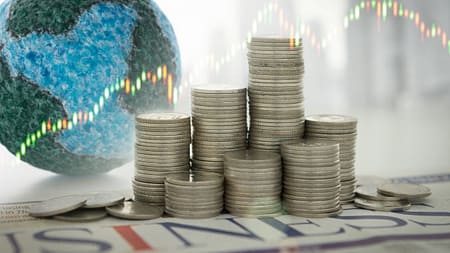Column by Viral Desai, Environmentalist & Ecopreneur
Our Prime Minister Narendra Modi is not only a global leader but also a global thinker. All his decisions are no longer only India-oriented, but he takes global decisions in all projects in a way that benefits the world. Due to this, leaders worldwide and even big countries have unwavering faith in this New India. Narendra Modi has recently taken one such vital initiative: promoting Millet worldwide as a superfood. There has been a lot of discussion around the world regarding this initiative of the Prime Minister, and the United Nations has declared the year 2023 as the ‘International Year of Millets’.
The whole world is looking at the promotion of these millets from only two points of view. One view is good health, and the other is the economic benefit to the farmers of India and the increase in agricultural production through millet crops. But in addition to these two perspectives, the third critical perspective is the climate action context because millets are all crops produced in minimum water. In such a case, if the market is opened for millets in the country and worldwide, the country’s farmers will be attracted to the cultivation of millets by switching from other crops. Because of this, millions of litres of water will be saved daily, directly benefiting the people.
Another advantage is that millets crops do not require any harsh chemicals. Due to this, the production of agricultural chemicals will also be stopped to a large extent. Also, several crops of Millet fall into the C4 grain group. Crops in this group absorb more carbon dioxide from the environment and give the same amount of oxygen. A report is also saying that millet crops emit much less greenhouse gas.
By promoting Millet as a superfood, the PM will make India the world headquarters for Millet and the largest exporter in the world. So, from our small farmers to an entire chain, there will be substantial economic and environmental benefits; that means a considerable amount of water will be saved, fewer green gases will be emitted, and the carbon in the air will also be absorbed to a greater extent.
Perhaps that is why the Prime Minister called Millets ‘Shri Dhanya’ because Shri means all kinds of prosperity from the Indian point of view. However, this is just one point of discussion relating to what contribution India can make to the global climate issues through millets. How millets will come into play in the world’s problems caused by climate change is a different matter altogether. As the temperature rises, it has profound effects on agriculture across the globe. According to the reports, 10 per cent of the crops are destroyed worldwide due to uncertain monsoons, cyclones, and droughts. On the other hand, the global population is increasing daily, so the demand for food has increased.
Considering all these problems, it was said that by 2030, a large world population would face hunger and a lack of food. But Millet’s promotion has become a ray of new hope for climate activists and health experts worldwide. Because in countries where the temperature has increased, if millets are accepted as an alternative, a large population will be saved from the threat of starvation.
In short, millets are food for the future for sure. And it is equally valid that it will become not only a future food but also global food. PM Modi has also prepared another roadmap so that a large population of India as well as the global population, can easily include millets in their diets. Across India, exhibitions will be organized in which various dishes made from Millet will be introduced, and information will be given about how healthy those dishes are. The uncertainty in people’s minds is how much to consume and how to increase the quantities of Millet in their diet. But in the coming time, many options will be presented in front of them, from breakfast to dinner, and people will include Millet in their food with great enthusiasm.










